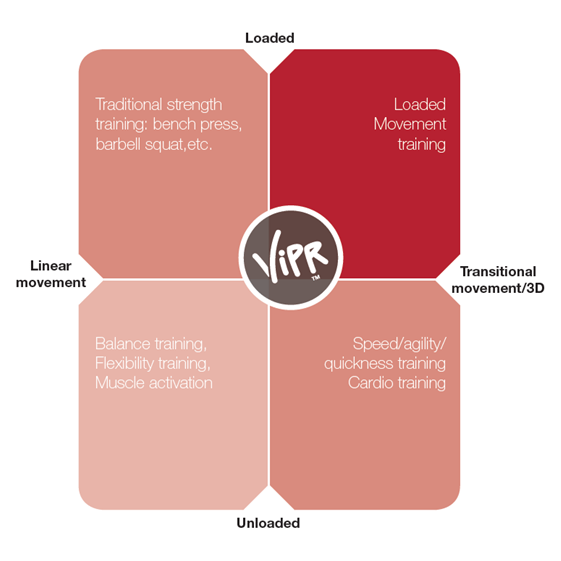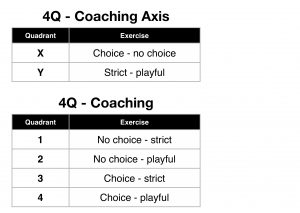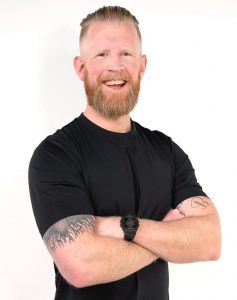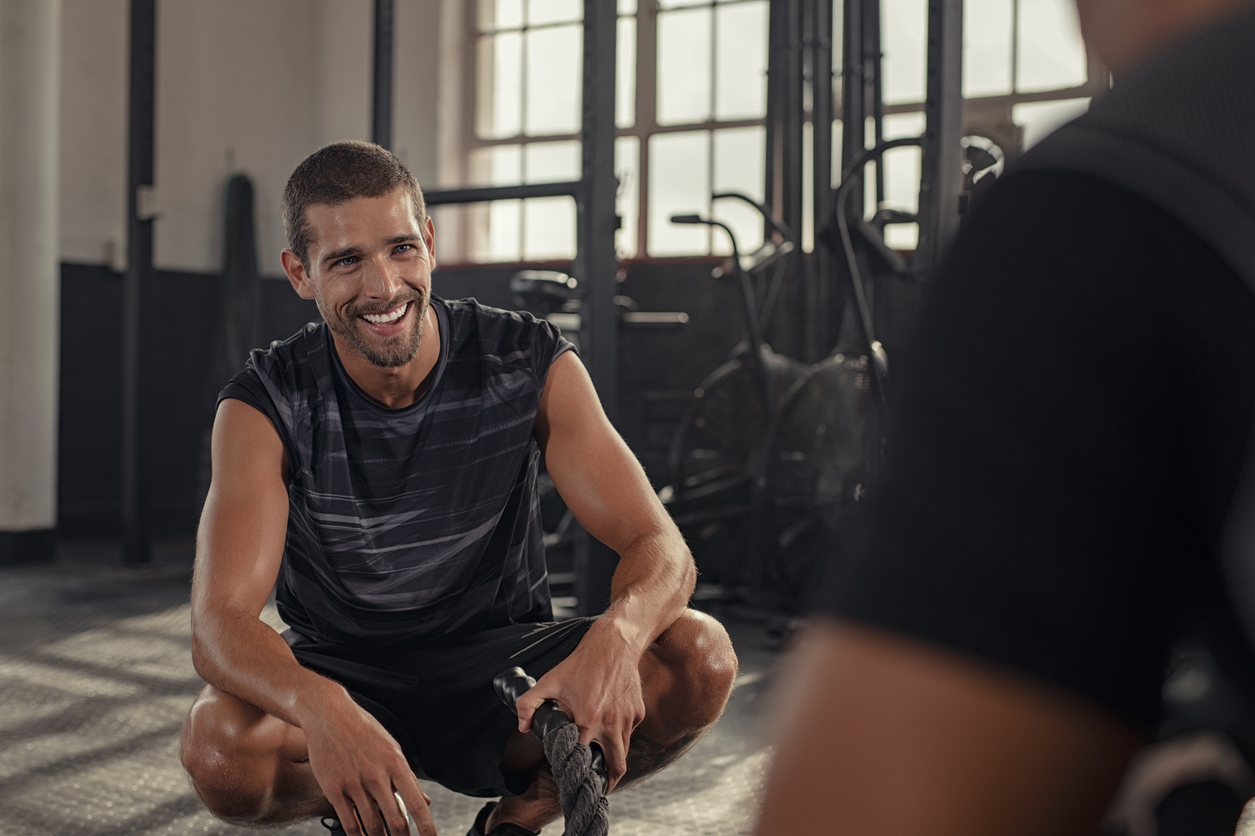What would happen if we were to train a client using heavy traditional movements ALL of the time? It’s quite simple really: a lack of new stimulus for brain and body, an overreaching amount of a single stimulus (load orientated), with the result being an overtrained, bored and burnt-out client.
4Q programming allows us to plan for well-balanced and smart sessions that allow for high-performance training from energised ‘everyday athletes’!
The 4Q model has been applied in business modelling, political posturing and, more recently, health and performance programming. Michol Dalcourt, the inventor of ViPR, adapted the biaxial model to quantify the total fitness spectrum and qualify the principle of Loaded Movement Training. According to the ViPR 4Q model, we are able to split all training forms into two axes. The vertical axis sees the spectrum of loaded (with external force/resistance) to unloaded (without external force, beyond the scope of gravity). And the horizontal axis sees linear (single direction, simple movement) to transitional (multi-directional, complex movement).

As we take a tour of the 4Q model, we start at Q1.
Q1 Training involves moving most of the body, generally in one direction, using external load, from which we have the potential to elicit gains in strength, hypertrophy and joint stability. The more external load or force we apply and the more linear we make that movement, the further into the quadrant we would plot the exercise. As an example, an exercise that we would plot in the far top left corner would be a heavy leg press because of its very simple, stable and known nature and because of the significant amounts of load we can push. Further towards our X we could plot a dumbbell lunge – less load in the hands and more chance of small variations in length, direction and depth of lunge.
Q2 Training again involves moving the body in one linear direction, but this time without the use of external load or forces, from which we can successfully train movement patterning and elect movement quality and gains in classic flexibility. A far bottom left exercise example would be hip bridge and an example that may sit closer towards the X (unloaded but with higher force and degree of movement variation) would be a bodyweight push-up or lunge.
Q3 Training involves movement variation and often different parts of the body being driven in different directions. At this point we remain unloaded. Classic examples of this type of training include speed, agility, quickness (SAQ) drills such as bounding, hurdle work, cone sprints or even dancing. Q3 brings about improvements in co-ordination, reactions, rhythm and timing, all essential for a fast, high-performing human.
Q4 is the complementary quadrant. Because we load Q4 exercise yet move in multi directions, we are able to still gain and gather strength gains, especially specific to real-life or sporting movements. Also, because we move omni-directionally, we are able to challenge all of our Q3 qualities and concentrate on movement quality such as in Q2. Q4 movements – when programmed well – can help to elicit gains from its own quadrant – moving better for life or sport – or help to overcome a plateau from any of the other quadrants.
Here is a classic example of a 4Q session:
Taking one classic exercise from each quadrant, we are able to form a whole-body balanced performance training programme. Take a look!
Classic, balanced performance
But wait: there are more ways that we are able to use 4Q modelling to plan. The beauty of the 4Q model is that we have the ability to adapt it for different clients, different components of fitness and different mindsets or methodologies. Take a look at these different takes on the 4Q model that will empower you in creating your own!
Mobility – Hip flexor
Hypertrophy – Chest
Self-myofascial release (SMR) – Hamstring
Aaron’s take on 4Q programming… Coaching the 4Q model

Play with the order of the Qs to elicit different responses – Q3 or Q4 in small bouts are great for priming a client before a big Q1 exercise!
✔️ Play with the amount of each Q per session – Q4 exercises spend a lot of neuromuscular currency, so be sure not to put your client’s body in debt!
✔️ Remember that different clients will respond differently to each of the quadrants depending on their personality and preferred style of training. A-type personalities may enjoy Q1 and Q2 exercises (being more regimentally minded), so be aware not to overstimulate them with Q3 and Q4 too frequently. However, B-types could easily become bored with the repetitive nature of Q1 and Q2 exercises!
✔️ Create your own 4Qs to enhance and empower your programming!
The 4Q model – a smart tool for assessing and addressing your clients’ wants and needs, which can be used to programme single sessions or plan periodisations and ensure that sessions are designed and delivered in a fresh and empowering way!
Want to be up-to-date with all things ViPR? Get signed up for their bi-monthly newsletter ✔️

Aaron Barnett currently leads Fitness Practitioner at Peppy (Corporate Wellness) helping to support the moments that matter. In his previous life he was the Head of ViPR education for FitPro and managed the FitPro National Trainer team. As well as a successful PT and educator within his own rite Aaron believes that by learning, sharing and collaborating with the best in function this will serve ViPR Global in remaining the number one functional training tool!







